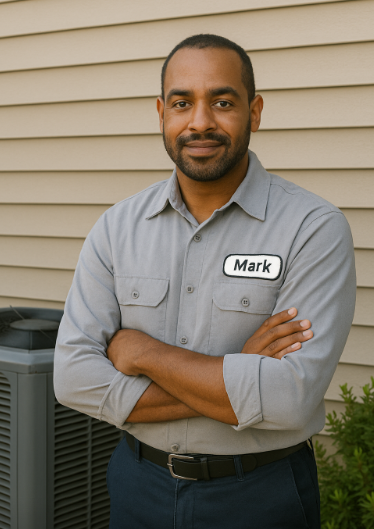In the evolving landscape of home heating and cooling, electric furnaces are becoming a central part of many homeowners’ energy solutions. But the real revolution is happening behind the scenes with refrigerants — specifically, the adoption of R-32. While electric furnaces themselves don’t use refrigerants directly, the integrated heating and cooling systems they often pair with rely heavily on these chemicals for efficient operation. Understanding why R-32 refrigerant is reshaping the HVAC industry is crucial for anyone considering an electric furnace upgrade or new installation.
I’m Mark Callahan, an HVAC professional with over two decades of experience, and today I’m breaking down how R-32 refrigerant is a true game changer for electric furnace systems, home comfort, and environmental responsibility.
Understanding Refrigerants: What They Are and Why They Matter
Before we dive into R-32 specifics, let’s clarify what refrigerants do. Refrigerants are substances used in cooling and heat pump systems to absorb and release heat. In electric furnace setups combined with heat pumps or air conditioners, the refrigerant cycles through evaporators and condensers, transferring heat efficiently.
Traditionally, HVAC systems have used R-410A refrigerant, but environmental regulations and efficiency goals have driven the industry to seek better alternatives.
What is R-32 Refrigerant?
R-32 is a next-generation refrigerant with a Global Warming Potential (GWP) of 675, significantly lower than R-410A’s 2088. This lower GWP means R-32 has a much smaller impact on climate change when released into the atmosphere.
Key attributes include:
-
Higher energy efficiency: R-32 systems typically use less electricity to deliver the same cooling or heating capacity.
-
Lower refrigerant charge: You need less R-32 by volume compared to R-410A for the same performance.
-
Easier to recycle and reclaim: Its chemical structure allows for more straightforward handling in maintenance and disposal.
According to the International Energy Agency (IEA), R-32 adoption can help reduce HVAC-related emissions by up to 75% compared to older refrigerants, making it a crucial part of global decarbonization efforts.
Why R-32 Matters for Electric Furnace Systems
While electric furnaces generate heat via electric resistance elements, most modern homes use a combined system: an electric furnace paired with a heat pump or an air conditioner for cooling and supplemental heating. These combined systems rely on refrigerants, and upgrading to R-32 in these components enhances overall efficiency and environmental performance.
1. Boosting Heat Pump Efficiency
Heat pumps using R-32 refrigerant operate more efficiently, especially in moderate climates. When paired with an electric furnace as a backup heat source, the system requires less electrical energy overall.
This results in:
-
Lower utility bills
-
Reduced strain on the electric furnace during peak heating needs
-
Extended equipment lifespan due to balanced load
The U.S. Department of Energy emphasizes that heat pumps with advanced refrigerants like R-32 are key to achieving net-zero energy homes by 2030 (source).
2. Compatibility with Modern Controls
R-32 systems are designed to work with sophisticated thermostats and variable-speed compressors that optimize comfort and energy use. This means electric furnaces paired with R-32 heat pumps can deliver consistent warmth with less cycling and fewer temperature swings.
Environmental and Regulatory Drivers
Global agreements like the Kigali Amendment to the Montreal Protocol mandate phasedown schedules for high-GWP refrigerants like R-410A. Many countries, including the U.S., Canada, and EU members, have adopted or are adopting policies that encourage the use of low-GWP refrigerants such as R-32.
-
The EPA’s SNAP Program lists R-32 as an acceptable substitute refrigerant for new equipment.
-
The European Union’s F-Gas regulations limit the use of R-410A and encourage R-32 adoption in HVAC manufacturing.
These regulations not only help the planet but also influence product availability, pricing, and innovation in HVAC systems.
Economic Benefits of R-32 Refrigerant Systems
Investing in HVAC systems with R-32 refrigerant can result in:
-
Lower operating costs thanks to increased efficiency
-
Access to rebates and incentives from utilities and governments encouraging green upgrades
-
Future-proofing your system by complying with evolving environmental regulations, protecting resale value
The Consortium for Energy Efficiency (CEE) highlights that systems using low-GWP refrigerants often qualify for higher rebate amounts, boosting your return on investment.
What Homeowners Should Know Before Buying
When selecting an electric furnace or integrated heating/cooling system:
-
Confirm that the accompanying heat pump or air conditioner uses R-32 refrigerant.
-
Ask about the system’s SEER2 and HSPF ratings—these metrics account for efficiency improvements with refrigerants like R-32.
-
Ensure your installer is certified to handle R-32 safely, as it is mildly flammable (classified as A2L refrigerant).
-
Check eligibility for rebates or tax credits tied to low-GWP equipment in your area.
Resources like AHRI’s Directory help you verify certified equipment specifications.
Installation and Maintenance Considerations
Because R-32 is slightly flammable, proper installation and servicing protocols are critical:
-
Technicians need specialized training and certification to work with A2L refrigerants safely.
-
Equipment must have leak detection and ventilation safeguards.
-
Annual maintenance ensures refrigerant charge is correct and the system is operating at peak efficiency.
Regular tune-ups not only prevent breakdowns but also ensure the environmental benefits of R-32 systems are fully realized.
Looking Ahead: The Future of Home Heating and Cooling
R-32 refrigerant is more than a replacement—it’s a catalyst for smarter, cleaner, and more efficient home climate control. When paired with electric furnaces and modern controls, it helps homeowners enjoy:
-
Reliable, even heating
-
Lower electricity bills
-
Reduced environmental impact
-
Increased home comfort year-round
Adoption is accelerating as manufacturers innovate, incentives grow, and consumers demand sustainable solutions.
Final Thoughts from Mark Callahan
If you’re exploring electric furnace systems or full HVAC upgrades, understanding refrigerant technology is essential. R-32 is leading the way with improved efficiency, regulatory support, and environmental benefits.
To explore quality electric furnace systems compatible with R-32 refrigerant heat pumps, visit the electric furnace collection at The Furnace Outlet. Pair smart equipment with informed decisions and enjoy the future of home heating today.
Stay efficient, stay comfortable, and keep your home green.
—Mark Callahan







